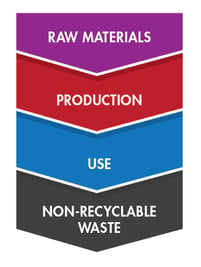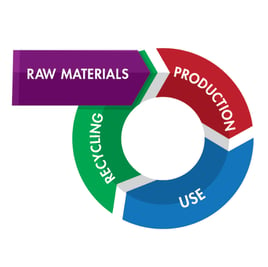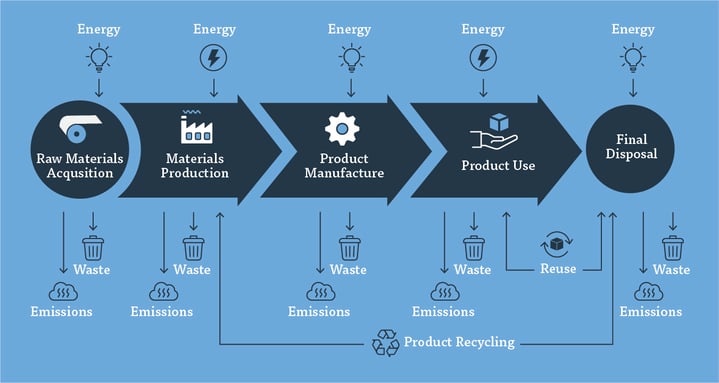As the effects of climate change impact communities around the globe, there’s a growing understanding that environmental stewardship is a shared responsibility. Within manufacturing, sustainability has become a popular buzzword and strategic objective. But what does it mean, and what can companies and product designers do to achieve greater sustainability?
Shifting to a circular economy
To fully achieve sustainable manufacturing, we – as an industry and society – must first rethink how products are made and used.
 The traditional linear economy follows a take-make-and-dispose process. This model relies heavily on raw materials to make new products. Unfortunately, in a linear economy, the majority of products are disposed of after use, leading to a reliance on landfills, more pollution, and increased consumption of additional resources to source new raw materials.
The traditional linear economy follows a take-make-and-dispose process. This model relies heavily on raw materials to make new products. Unfortunately, in a linear economy, the majority of products are disposed of after use, leading to a reliance on landfills, more pollution, and increased consumption of additional resources to source new raw materials.
 However, in a circular economy, products are designed to promote as much reuse as possible. The make-use-return model continuously repurposes materials, resulting in less disposed waste. Achieving a circular economy requires more than improving recycling practices. It calls for more efficient product design, eco-conscious materials selection, expanded upcycling and repurposing programs, and rethinking our production and usage of products. No small feat, but a worthy endeavor for all of society.
However, in a circular economy, products are designed to promote as much reuse as possible. The make-use-return model continuously repurposes materials, resulting in less disposed waste. Achieving a circular economy requires more than improving recycling practices. It calls for more efficient product design, eco-conscious materials selection, expanded upcycling and repurposing programs, and rethinking our production and usage of products. No small feat, but a worthy endeavor for all of society.
Life Cycle Assessment
One tool that can be valuable in developing a sustainability plan and moving toward a circular economy is the Life Cycle Assessment (LCA), which is a study of a product from the cradle to the grave. The analysis considers the actions and environmental impact of raw material extraction, manufacturing, distribution, the long-term use of the product, and how it can be recycled or disposed.
A holistic LCA study:
- Challenges companies to consider the long-term impact of their products, including how consumers use them
- Provides quantitative measures to help designers and engineers to make more informed design decisions
- Encourages multiple stakeholders to work in collaboration
- Formalizes, coordinates, and integrates sustainability practices across the company, supply chain, and distribution partners
- Encourages strategic planning and implementation of innovation to improve outcomes
Take a deeper look at sustainable manufacturing
To learn more about how your company can help make a better, greener future, we invite you to download Tapecon’s Sustainability Guide for manufacturing, printing, and materials selection.
Let’s make something great
With over 100 years of manufacturing experience, Tapecon works with product teams to solve challenges, create products, and enhance lives. Learn more about our sustainability initiatives.